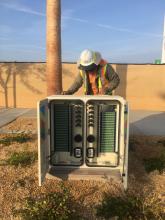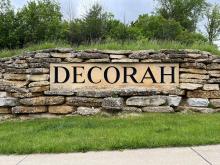
In the 1980s, Rancho Cucamonga proclaimed itself “The City with a Plan.” Back then, the plan was to remake this once rural enclave known for its vineyards into more than just one of the many sunny suburbs of Los Angeles. The vision was to leverage its stretch of the famed Route 66 highway as a branding and economic development tool and transform the city into a premier destination within the Inland Empire metropolitan area along the foothills of the San Gabriel Mountains.
That forward-looking spirit was revived again 30 years later as city leaders looked to cultivate a digital vineyard with the creation of a “Fiber Optic Master Plan” – a six-year $13 million investment plan that targets the city’s new development.
Today, Rancho Cucamonga (its name was derived from a Native American word meaning “sandy place”) owns and operates Rancho Cucamonga Municipal Broadband in partnership with Onward, a local private Internet service provider.
The city built, owns, and maintains the physical infrastructure, which is managed by the Rancho Cucamonga Municipal Utility (RCMU). Onward, which is based in the city, provides gigabit speed Internet access to the network’s 525 mostly residential subscribers as the network slowly expands to reach yet-to-be-built residential developments.
Targeting Greenfield Projects and Businesses
The move toward municipal broadband began in earnest in 2016 when the city hired Magellan Advisors to develop a plan that would leverage the city’s existing fiber assets and expand its municipal utility fiber network to “greenfield projects” and the city’s business parks (see the map below that shows blue areas where service exists and orange areas where service is coming).
“We had a bit of a slow start so it wasn’t until 2020 when we had our first year of operating with revenue coming in,” RCMU Deputy Director of Engineering Services Fred Lyn told us when we spoke to him this week.
However, over the past two years, the city and Onward have picked up about 500 residential subscribers, almost all of whom are living in recently built residential units in The Resort, a master planned community in the southern part of the city. In fact, The Resort markets the community as a place where residents can "enjoy a truly connected living experience — one with tech-forward homes featuring cutting-edge gigabit connectivity."
“The Resort has built about 900 new units and is getting ready to build another 900 units. Once that is done we will have close to 2,000 passings. Right now we have a take-rate of about 40 to 50 percent. I wish it was 75 to 80 percent but we are the new kid on the block and we need to do more marketing,” Lyn said. “We have a better product and a faster service that is more cost-effective” in comparison to the city’s incumbent providers (Charter Spectrum and Frontier).
While Charter Spectrum did attempt to stave off competition from the city’s limited fiber network by offering promotional rates that ballooned months later, Rancho Cucamonga Municipal Broadband’s small subscriber base can get a no gimmick gig speed connection for just $70/month.

The same holds for their commercial subscribers, all 25 of whom are located in the city’s commercial center just off Route 66 as the city is using the network to help retain existing businesses and attract new ones to locate there.
“We bonded out the capital plan to invest and build out our fiber infrastructure,” Lyn said.
And even though the city does not currently plan to build out the network citywide, they do get calls from parts of town that do not have access to the network hoping to sign up for service. “It’s a difficult conversation because we are not ready to expand the backbone,” he added.
Still, Lyn said, even for the majority of Rancho’s 175,000 residents who cannot access the network, they are still reaping the ancillary benefits of a competitive municipal network.
We are going into our second year of operation and we have definitely seen the opportunity to provide gigabit service which had never been seen before here. It really triggered the incumbent providers to invest in fiber and upgrade their networks.
A Public-Private Partnership That Works
Unlike public-private partnership in some other cities, Rancho Cucamonga put itself in the driver’s seat by opting to maintain ownership of the network instead of building it and turning it over to a private ISP, which could lead to a single-minded focus on profit and abandoning a sense of community service.
Fortunately for Rancho Cucamonga, they found a good partner in Onward, whose business is tied to the community. They were also able to settle on a revenue-sharing agreement that works for both the city and Onward. Still, if for some unforeseen reason that relationship should sour, the city wouldn’t lose its investment because it owns “everything up to the NID and we even provide the modems so we go inside the home,” Lyn explained.
Moving forward, Lyn said, “we are looking to capture as much of the market for new residential units as possible. We are learning as we go and we are working with new developers where they put in the conduit.”
While we often tout the success and benefits of municipal broadband, that’s not to say public-private partnerships are not a perfectly viable solution for some communities, particularly communities who carefully evaluate and align each side’s needs as it pertains to risk, benefit, and control; and the inevitable trade-offs involved.
Header image of fiber cabinet courtesty of Rancho Cucamonga Municipal Utility







